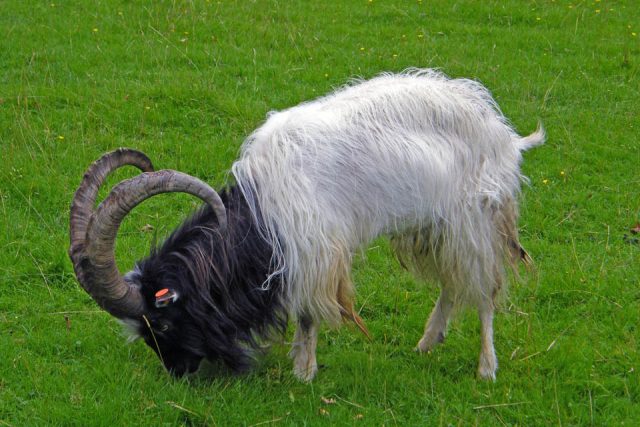Type the name of the breed you're looking for below
[wpdreams_ajaxsearchlite] Don't see the breed your're looking for? Click here and let us know!
Bagot goat
| Place of Origin | England |
| Origin | The Bagot goat is a breed of goat which for several hundred years has lived semi-wild at Blithfield Hall, Staffordshire, England. It is a small goat, with a black head and neck and the remainder of the body white. In 2010 it was considered "critically endangered" by the Rare Breeds Survival Trust, as there were fewer than 100 registered breeding females in the United Kingdom, but by 2012 had been upgraded to "vulnerable". Bagot goats were introduced to England at Blithfield Hall in the 1380s. They were probably brought back to England by returning Crusaders, and probably trace their ancestry to goats of the Rhone valley. The goats were said to have been given to John Bagot of Blithfield by King Richard II of England to commemorate good hunting the King had enjoyed at Blithfield. It is known that these goats have been running semi-wild at Blithfield for well over 600 years. As regards the history story and the crusades. It must be pointed out that the crusades finished around 1100. The goats, so the story goes, went to Blithfield around 1380. This would indicate that the goats probably went first to one of the Royal Parks. The damage they would have done there, no doubt would have been considerable and the King would have been glad to get rid of them to another place where they could be enjoyed for hunting. |
| Purpose | Feral |
| Characteristics | Colouring of wool is white, with a black face. |
| Other Considerations | A flock is still kept by the Bagot family in the deer park of Levens Hall, Cumbria. Examples can also be seen at: Birmingham Nature Centre Shugborough Hall in Staffordshire Mary Aden's Farm in Warwickshire Aldenham Country Park in Hertfordshire South of England Rare Breeds Centre St James City Farm in Gloucester. |



